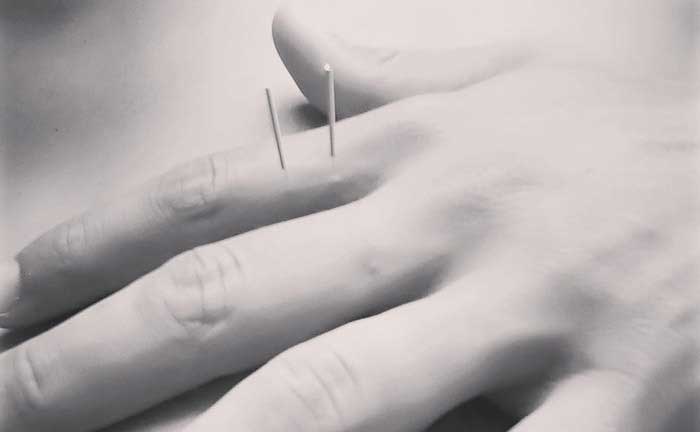Dating back hundreds of years, acupuncture is a traditional method deeply rooted in ancient Chinese medicine. Known for its efficacy in relieving pain and treating various ailments, acupuncture utilizes an unorthodox technique of inserting needles into specific areas of the body. Although this practice has been prevalent in China for centuries, it has gained popularity in the West only over the last hundred years due to its therapeutic and preventive benefits. In the Western context, acupuncture is often considered a complementary or alternative form of medicine rather than the primary method of treatment, except for mild conditions that can be effectively managed with acupuncture alone. Acupuncture treatments can be found in clinics and hospitals but are more commonly available at spas and wellness centers.
The Science Behind Acupuncture
Acupuncture involves stimulating sensory nerves under the skin and within the muscles of the body. This stimulation prompts the body to produce natural substances, particularly pain-relieving endorphins. These naturally released substances are believed to be responsible for the beneficial effects of acupuncture. To achieve longer-lasting pain relief, multiple acupuncture sessions are often recommended.
Traditionally, it was believed that acupuncture works through an energy, or "life force," which flows through the body in channels known as meridians. This life force is referred to as Qi (pronounced "chee"). According to traditional Chinese medicine, any disruption in the flow of Qi leads to illness. Acupuncture is thus seen as a way to restore the free flow of Qi and, consequently, to promote health.
Applications of Acupuncture
Acupuncture is employed to address a wide range of conditions, including chronic tension-type headaches, migraines, musculoskeletal conditions (affecting the bones and muscles), and various pain conditions. These pain conditions can include chronic pain such as neck pain, joint pain, dental pain, and postoperative pain, among others.
The Acupuncture Procedure
During an acupuncture session, practitioners insert needles into specific points on the body, known as acupuncture points. The needles used are fine, a few centimeters long, pre-sterilized, and are intended for single use. The selection of specific points depends on the patient's condition, and a typical session may involve the use of up to 12 points, although this number can vary based on the symptoms presented.
Once the needles are in place, they may be left for a period ranging from a few minutes to half an hour. The insertion of needles might cause a tingling sensation or a dull ache, but the process should not be overly painful. Patients are encouraged to communicate with their practitioner if they experience significant discomfort.
Techniques in Acupuncture
While conventional acupuncture is widely practiced, several other techniques can be employed to enhance the therapeutic effects of acupuncture:
Electro-Acupuncture: In this method, the practitioner may rotate the needles or stimulate them with a mild electric current. Inserted needles are connected to an electro-acupuncture apparatus, which delivers electrical impulses of varying amplitudes and frequencies. Low-frequency electro-acupuncture is designed to reduce pain by stimulating the release of chemicals from the brain that aid in analgesia, relaxation, and sleep, making it particularly helpful in cases of chronic pain.
Acupressure: This technique involves applying pressure to acupuncture or trigger points to decrease muscle tightness and stimulate the flow of Qi. The amount of pressure applied varies depending on the condition being treated. Acupressure is especially suitable for patients with a needle phobia, children, and frail individuals.
Laser Acupuncture: Laser stimulation is used in conjunction with acupuncture treatment and is particularly suitable for nervous patients, children, sports injuries, sensitive areas, and ears. This method involves the use of laser light to stimulate acupuncture points without the use of needles.
Moxibustion and Cupping: These techniques are used to introduce warmth into acupuncture points. Moxibustion involves burning a herb called moxa on or near the acupuncture needle or skin, while cupping involves placing cups on the skin to create suction. Both techniques increase circulation, remove waste products, reduce muscle spasms and pain, and stimulate the flow of Qi. These treatments are often used in conjunction with other therapies, such as physiotherapy, to stretch damaged tissue or mobilize joints. Conditions treated with these techniques include osteoarthritis and areas with poor Qi flow or cold conditions.
The Benefits of Acupuncture
The benefits of acupuncture are numerous and diverse. It is commonly employed to address specific problems such as chronic muscle pain, injury rehabilitation, low back pain, limited mobility, recovery from injuries (such as whiplash and falls), repetitive strain injury, and postural problems. Additionally, acupuncture has been shown to lower high blood pressure, decrease the symptoms of arthritis, relieve stress, increase joint mobility, and reduce chronic pain.
Acupuncture stimulates blood flow and relieves muscle tension, while also reducing psychological stress and promoting the release of endorphins, the body's natural "happy hormones" like serotonin and oxytocin.
Precautions with Acupuncture
While acupuncture offers many benefits, it is important to take certain precautions. Individuals with a history of blood clots should avoid acupuncture, as the treatment could potentially dislodge the clots. Those at risk of forming blood clots should consult with their doctor before undergoing acupuncture.
Patients who have undergone chemotherapy, radiation, recent surgery, or have other medical conditions should also seek medical advice before receiving acupuncture. Additionally, individuals with osteoporosis should avoid this type of treatment due to the potential risk of injury.
Acupuncture provides a holistic approach to wellness, offering significant benefits for both physical and psychological health. By understanding the science and traditional beliefs behind acupuncture, individuals can make informed decisions about incorporating this therapy into their wellness routines. Acupuncture's various techniques and applications make it a versatile treatment option for a wide range of conditions. With proper preparation and guidance from healthcare providers, acupuncture can be an effective method for enhancing overall health and well-being, helping individuals to manage pain, reduce stress, and improve their quality of life.

